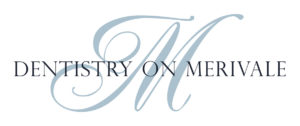Amalgam-free Dentistry
At Dentistry on Merivale all restorative dental procedures are carried out without the use of mercury amalgam or other heavy metals.
There are many types of amalgam-free materials that can be used instead of dental amalgam in the long-term maintenance of dental health. Each amalgam-free material has its own benefits and limitations, and the decision over which to use in a given situation is based on several factors too involved to be discussed in detail here and must follow a clinical examination. The three most frequently used materials (in our practice) and their basic characteristics are:
Composite
Dental composite has been around for years and is now used routinely by most dentists for small to even relatively large fillings. It is composed of, essentially, very small ceramic particles held in a plastic matrix. If you have ‘white fillings’ they will most likely be this material. Composites are of course mercury and silver free so are far better that mercury amalgam from a biologic perspective. Most composite systems do contain titanium dioxide, HEMA, phthalates (BPAs and TEGDMA) that some studies show are released into the body from these fillings and may have systemic effects with some people.
Due to this concern, David searched the world and found a composite system out of Switzerland that is free of these possible toxins. He established the company Bioholistic New Zealand Ltd (Bioholistic.co.nz ) which serves as an importer of this material for use in his practice and any other NZ practices with the same holistic philosophy. The Swiss company is called ‘Saremco’, whose mission is the development of clinically excellent and biologically compatible dental restorative systems. Theirs is currently the only dental restorative system where every component is HEMA and TEGDMA free. http://www.saremco.ch
Dental Ceramics
These form a large family of tooth coloured, physiologically inert dental restoration materials. They are probably as close to ‘ideal’ as modern technology allows in terms of durability and appearance but tend to be more costly as the process involves a lab fabrication step that entails more that one appointment. There are single appointment (cad-cam or ‘cerec’) porcelain fabrication systems around, but we find the best long-term results are obtained using an indirect, 2 step technique. There are many different types of dental ceramic, each of which has its own characteristics and applications. Choosing the material that is ideal for a given situation is dependent on many factors, and will be discussed in detail when a treatment plan is organised.
Gold
After decades of use, gold is still an excellent dental restorative material today. As with ceramics, two steps are required. Gold can be used for nearly any size filling required from very small inlays to full crown coverage restorations. It is also physiologically inert and very reliable in terms of strength and longevity, however cosmetically it obviously has its limitations.
Other
There are several other families of dental restorative material, such as glass ionomers, indirect composites etc, however, in our opinion, these do not perform over the long term and are not used (in our practice) for anything other than temporary restorations in most cases.
